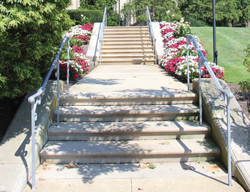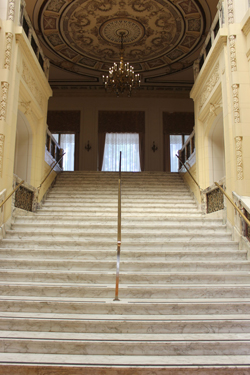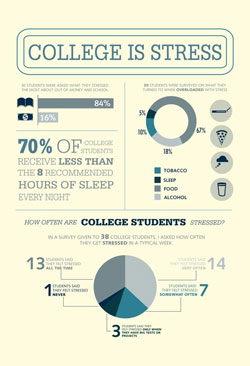Monmouth University prides itself on being an accessible and diverse campus, but what is it really like to be a person of any degree of disability on campus? As a person who has just recently been put on crutches, I was very curious for my first day on campus to find out just how ‘easy’ life would be on campus with this new debilitation.
Being on crutches is not easy, period. So, I did not expect it to be easier on campus—I knew it would be difficult to get around, but that isn’t Monmouth’s fault. Another thing that is not Monmouth’s fault, but dampened my spirits was the lack of aid from peers. It was shocking to me how many students did not open doors for me and how many students flashed harrowing looks at me because of my crutches—simply because I looked different.
Life gets turned completely upside down when one day you are walking all over campus confidently and the next you are hobbling around and trying not to draw attention to yourself. All of the sudden your thoughts switch from, ‘What should I get at the Student Center for lunch?’ to ‘I won’t be able to hold a piece of pizza on a plate and use my crutches at the same time.’
Everything is different and you have to change your mindset completely. Thinking about trying to get to an office on the second floor of Wilson? Think again if you’re on crutches or have a disability of any kind. Wilson Hall, while spectacularly beautiful, is not very handicap-friendly. There are elevators, but there are plenty of horror stories about getting stuck in them, so most try to avoid taking them.
Another thing I noticed was that on some buildings, like the Jules L. Plangere Center, the handicap button to open doorways are either very far from the doors, or placed in odd, unnoticeable places. I also found myself walking out of my way just to get to elevators in various buildings and around buildings to get to ramps, which is something that I really shouldn’t be doing being that I shouldn’t be walking great distances.
 Professor Kathryn Brady, an adjunct professor of The Marjorie K. Unterberg School of Nursing and Health Studies, talked of her pitfalls as a person in a wheelchair: “This past summer, when my husband and I went to see the production of You’re a Good Man Charlie Brown, in The Lauren K. Woods Theater…the parking lot is accessible and so is entry to the building. However, there is not a convenient spot for wheelchair placement. My wheelchair was situated behind the top railing, which made fine viewing for me, but for anyone entering or exiting the theater my wheelchair was an obstacle sticking out that made it cumbersome to walk around.”
Professor Kathryn Brady, an adjunct professor of The Marjorie K. Unterberg School of Nursing and Health Studies, talked of her pitfalls as a person in a wheelchair: “This past summer, when my husband and I went to see the production of You’re a Good Man Charlie Brown, in The Lauren K. Woods Theater…the parking lot is accessible and so is entry to the building. However, there is not a convenient spot for wheelchair placement. My wheelchair was situated behind the top railing, which made fine viewing for me, but for anyone entering or exiting the theater my wheelchair was an obstacle sticking out that made it cumbersome to walk around.”
Patricia Swannack, Vice President for Administrative Services, stated, “The University designs all new buildings with the building odds in effect at the time of renovation or construction. I do not think it is more difficult to design a new building to comply with ADA codes. The challenge is when you renovate a building; sometimes you have to be really creative in order to meet the codes.”
My point in explaining the downfalls of being handicapped in some way on campus is that while there are plenty of things that Monmouth could improve on to make the campus more accessible, it is more of a matter of imploring the campus population to be more considerate.
For someone who has not had to deal with any type of disability, the campus seems like it would be easy to get around and peers always seem nice. For example, Davina Matadin, a sophomore computer science student, said, “Monmouth University successfully provides proper handicap accessibility to those in need of it. There are accommodations such as ramps and elevators to assist students. Monmouth students are more than willing to help out any student with any disability, which makes the campus a great place to be.”
I felt the same ways that Matadin did before I had to use crutches on campus. However, after being put on crutches you start to think a bit differently.
Briana Merkerson, a junior music industry student, was on crutches during her time here at Monmouth. She said, “People weren’t really super helpful unless they were my friends, but other than that people were not helpful. The buildings felt like they were extremely out of the way, especially coming all the way from Elmwood [the residential side of campus].”
“It was just too much for me,” Merkerson continued: “I actually stopped using the crutches earlier than I should have and just used my boot from when I sprained my ankle before because it was way easier dealing with the pain walking in the boot than using the crutches.”
It is not Monmouth’s fault that Wilson Hall is not the greatest with accessibility; it is a historical building that can’t have much altering done to it in the first place. As Swannack said, renovating buildings is much trickier than building the newer ones. Most of the issues I had that I listed above are things that really can’t be changed. However, the attitudes toward those that are dealing with disabilities can be changed.
It is important for students and faculty alike to realize that people that are healing from injuries or that are permanently disabled are not different from everyone else. I understand how someone that looks other than the norm would catch people’s eyes, but to gawk or shoot disheartening looks is not fair to people with disabilities.
It is so important just to offer to hold the door open for people; it truly could mean the world to them and let them know that they are normal and that the world isn’t staring at them in disgust or even awe. This small act of kindness can heighten the positivity of a boy or girl who is struggling with his/her disability.
PHOTO TAKEN by Nicole Riddle




